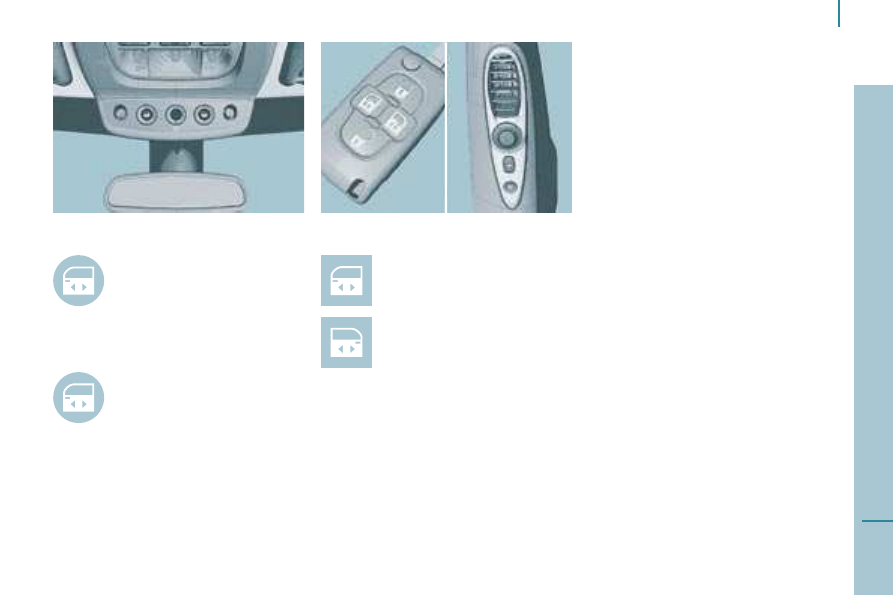Peugeot 807 Dag (2007.5). Instruction - part 2

>Visuel à venir
Accesses
R
EA
D
Y
to
SET
O
FF
19
2
either inside or outside the vehicle.
Do not lean through an open window, do not
leave any object protruding through the door
during opening or closing.
Do not leave children or pets near the
opening and closing controls without
supervision.
Obstacle detection
The detection system is triggered when
an obstacle which has a certain physical
resistance hinders the movement of the
door.
If an obstacle is detected during:
- closing of the door, the door opens fully,
- opening of the door, the door stops.
When the obstacle has been removed,
complete or restart the action using the
remote control or the interior controls.
Failure to observe these recommendations
may result in injury or damage if part of
the body or an object becomes jammed or
caught.
Opening/Closing using the
remote control
Press one of the buttons to open
or close the corresponding rear
door (right or left).
Opening/Closing
from the front
Press the corresponding control.
An audible signal accompanies
the opening and closing of the door.
ELECTRIC SLIDING SIDE DOORS
Remember to close the sliding doors when
your vehicle is parked for long periods,
the electric open door monitoring system
consumes power.
General recommendations
It is imperative that the doors are only
operated when the vehicle is stationary.
Always ensure that the door is operated
safely. Check that no person, animal or
object is preventing the required operation,
Opening/Closing from row 2
Press the corresponding control.